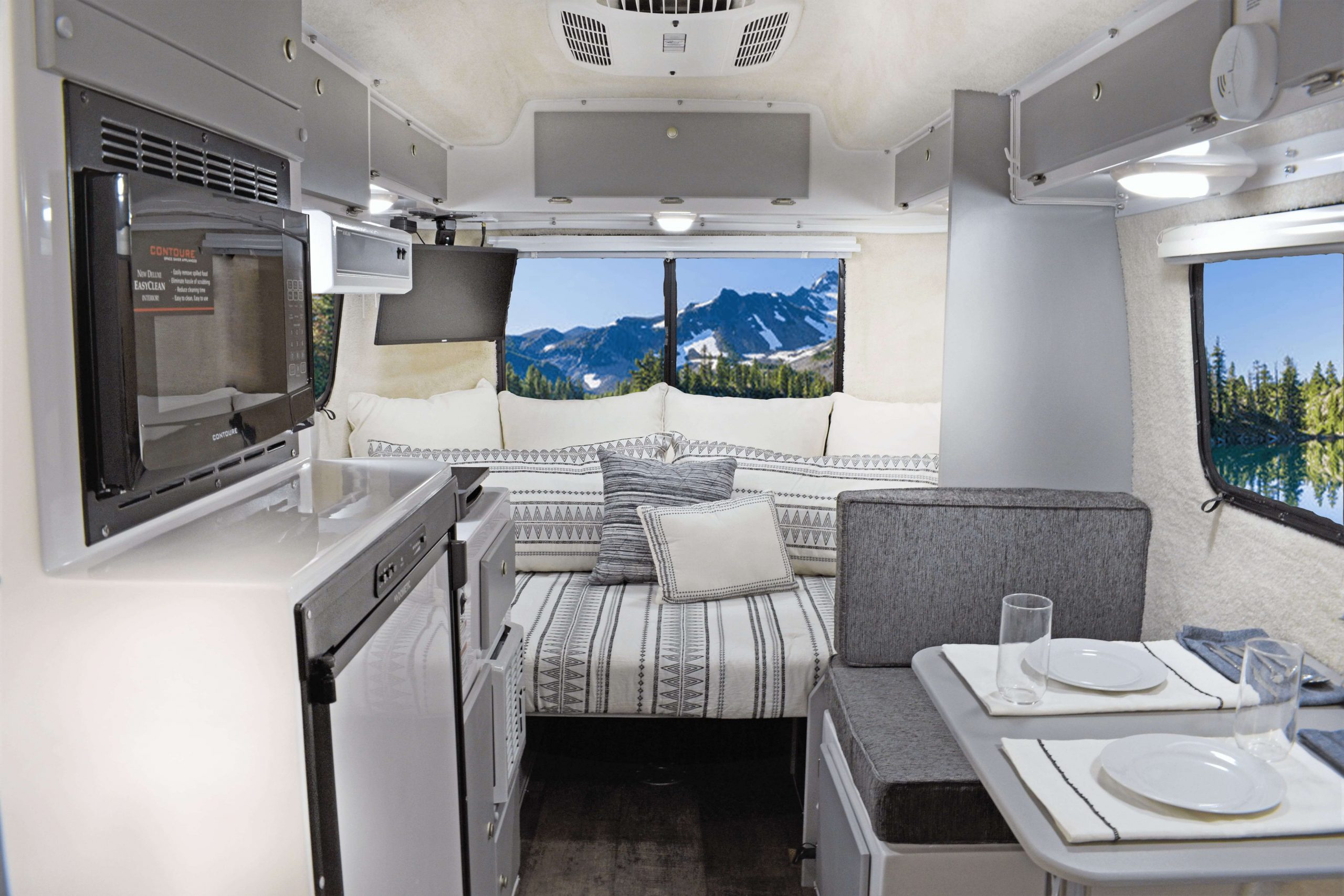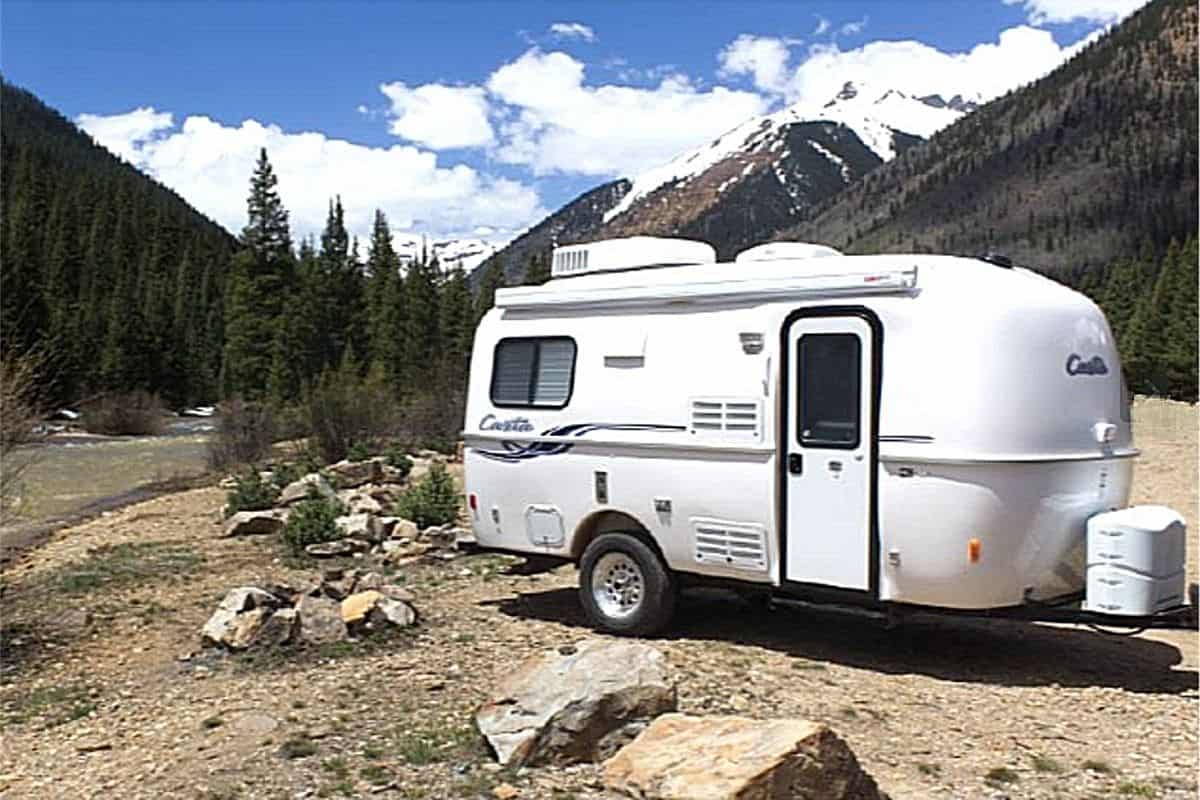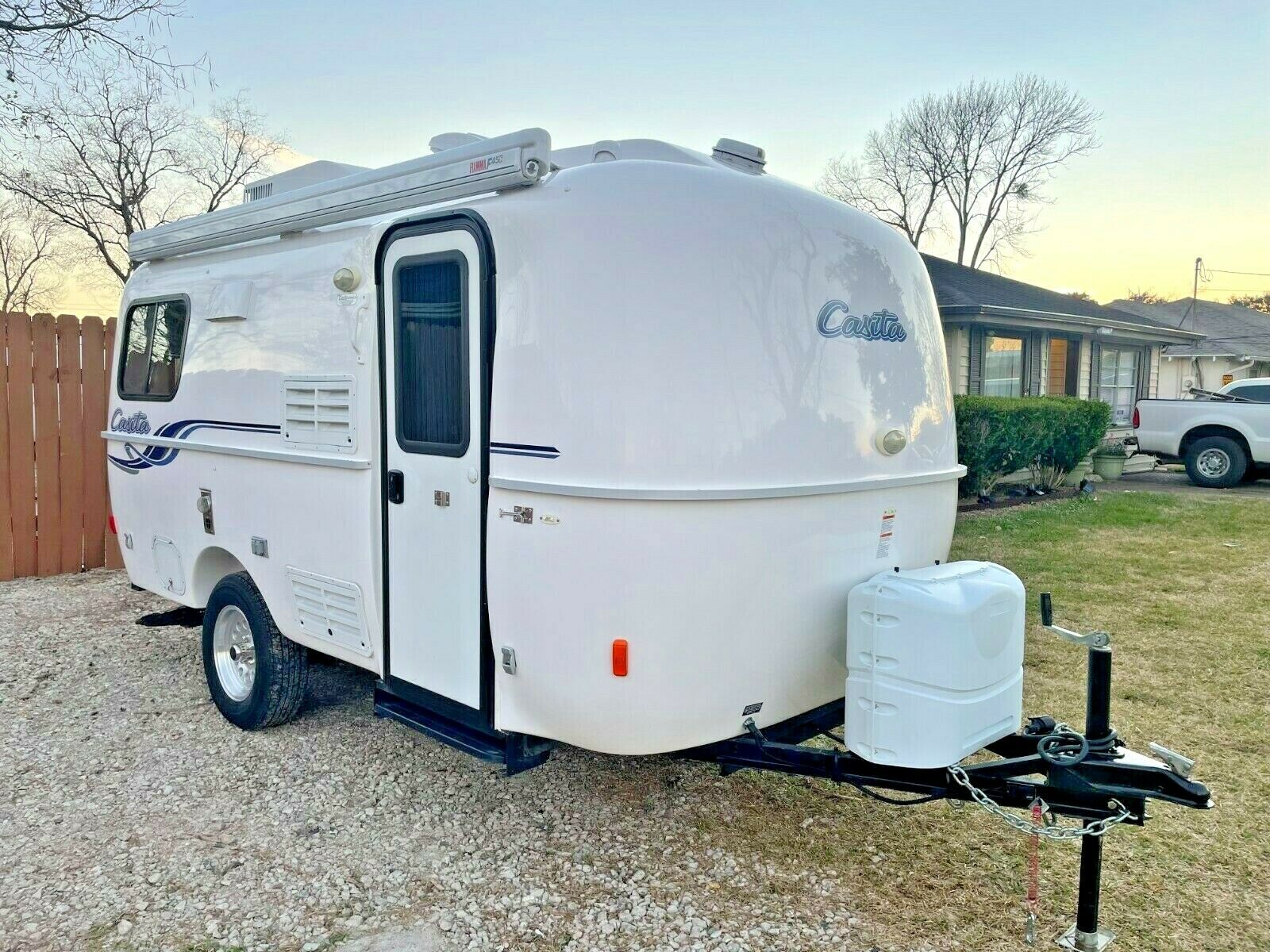Is the open road calling, whispering promises of adventure and escape? For those seeking a blend of affordability, compact design, and a touch of retro charm, the Casita travel trailer could be the perfect companion for your journeys.
Casita travel trailers, recognizable by their distinctive fiberglass construction, have carved a niche in the recreational vehicle market. They are known for their lightweight design, making them easier to tow and more fuel-efficient compared to larger RVs. This feature is particularly appealing to those who prefer to travel with smaller vehicles or who want to minimize their environmental impact. Furthermore, Casitas offer a range of layouts and features, catering to various travel styles and needs, from solo adventurers to couples and small families. The brand's commitment to a simple, functional design, coupled with its reasonable price point, has garnered a loyal following among RV enthusiasts.
Before we proceed, here is the information about the Casita Travel Trailers that we are going to discuss in this article.
| Category | Details |
|---|---|
| Company Name | Casita Travel Trailers |
| Founded | 1981 (as the "casita line," with the first trailer built); officially opened for business in 1983 |
| Founder | Don Eveland |
| Current Owner | John Lang |
| Headquarters | Rice, Texas |
| Website | Official Casita Website |
| Products | Fiberglass travel trailers |
| Sizes | 13 feet, 16 feet, and 17 feet |
| Key Features | Lightweight, compact design, various trim packages, family-owned and operated since 1983 |
The Casita story begins with Don Eveland, who, breaking away from the family business, initiated the "Casita" line in 1981. The initial design, as was widely noted, borrowed heavily from the Boler* mold, a testament to the influence of earlier compact fiberglass trailers. The business, after relocating to Texas, faced financial challenges and filed for bankruptcy. However, the Casita name and assets were subsequently acquired by John Lang, the current owner, and production was established in Rice, Texas. This move marked a turning point, leading to the establishment of Casita Travel Trailers as a family-owned and operated entity since its official launch in 1983.
Casita trailers are manufactured in the small town of Rice, Texas, a community with a population under 1,000. Approximately ten percent of the residents contribute to the creation of these travel trailers, highlighting the local impact of the business. This localized production ensures quality control and fosters a sense of community around the Casita brand.
Casita currently offers trailers in three primary sizes: 13 feet, 16 feet, and 17 feet. Within each size, a variety of trim packages are available, providing customers with choices to tailor their trailers to their specific needs and preferences. This flexibility allows Casita to cater to a diverse range of customers, from those seeking a basic, no-frills experience to those desiring more luxurious amenities.
One aspect of Casita ownership that sparks frequent discussion among enthusiasts is the interpretation of dimensions. The quoted lengths, such as 17 feet, often refer to the overall length from the trailer hitch to the rear bumper. However, the actual "egg" or fiberglass body of the trailer may be shorter. For example, the fiberglass body of a 17-foot model might measure approximately 13.5 feet. This discrepancy is a common point of confusion and emphasizes the importance of considering the actual living space when assessing the suitability of a Casita for your needs. It's a key point for prospective buyers to clarify, particularly when comparing Casitas to other trailer models.
One of the common question is that why a potential buyer choose a Scamp over a Casita? The main differences between the two brands come down to price, weight, and battery placement, among other features.
Cost is a significant factor. According to some owners, the Casita can be around $4,000 more than a Scamp with comparable equipment. For budget-conscious buyers, this difference can be a deciding factor. The Scamp is also lighter, which has a cascading effect. Lighter trailers are easier to tow, potentially allowing the use of a smaller vehicle and reducing fuel consumption. The Scamp's battery placement, usually outside the trailer body, is a further advantage, reducing the potential for issues related to battery failure. Battery placement is a crucial consideration, as it impacts accessibility and the potential for damage.
When it comes to battery systems, Casita owners have observed certain design choices. The battery bin in a Casita can hold only a single battery, even though there is space for another battery to the right of the existing bin. This design choice raises questions about space optimization and the potential for expanded power storage. Despite inquiries to Casita representatives, clear explanations for this design have been hard to come by. The implication is that owners looking for more battery capacity might need to explore aftermarket solutions.
For those looking to carry additional items, such as bicycles or other equipment, the hitch platform is an option. Orbital Machine Works makes a platform that bolts to the rear frame of the Casita 17. However, adding such a platform adds weight, around 50 pounds for the platform itself, and can reach approximately 200 pounds when fully loaded with a rack and trike. While Casita 17s are generally stable, excessive weight on the rear can affect the balance and handling of the trailer. This highlights the need to carefully consider weight distribution when customizing a Casita.
Inside the Casita, the deluxe version is equipped with a bathroom and shower. Sleeping accommodations are available for up to four people. This version includes a dinette that can seat four, with its back area convertible into a sleeping space. Meanwhile, the standard model offers sleeping arrangements for up to six people, providing flexibility for larger groups or families. These differences in configuration directly impact the user experience, and buyers must consider their individual requirements.
The importance of a warranty can't be overstated. The warranty is the company's guarantee that the trailer will hold up. It assures buyers that Casita stands behind its products. Any defects in materials or workmanship are typically covered, providing peace of mind to owners. Knowing that a warranty protects their investment, buyers gain confidence in the trailer's longevity and reliability.
The "Casita Discovery Program" links potential buyers with existing Casita owners. With over 2,000 members, this program offers a way to get personalized tours and get questions answered from those who have experience with the trailers. This direct interaction allows potential buyers to explore the features and benefits of the Casita firsthand and have their concerns addressed by knowledgeable individuals.
When considering a Casita, it's crucial to explore the available resources. Detailed specifications and literature are available, offering insights into the technical aspects of the trailers. Moreover, the official Casita website serves as a primary source of information, including the latest models and features. It's a hub for prospective buyers to learn more about the Casita experience.
The small town of Rice, Texas, a community of under 1,000 residents, serves as the manufacturing base for Casita Travel Trailers. Around ten percent of Rice's population contributes to the creation of these travel trailers. This localized production supports the local economy and reflects the brand's commitment to the community.
Casita travel trailers are found in the used RV market, and lengths are usually 13, 16, and 17 feet. In the used market, buyers can find Casitas at more affordable price points. This offers an opportunity to own a Casita without the price of a new model. Buyers should inspect the trailers carefully and assess their condition before making a purchase.
The Casita Independence model offers a configuration specifically designed for couples. With two permanent twin beds, it provides convenient access to the kitchen and bathroom. This layout eliminates the need for converting dinettes into sleeping areas, ensuring convenience and comfort for couples. The Independence model enhances the RV experience for those who prefer a dedicated sleeping space.
The Casita 17' 2008 Spirit Deluxe model, a specific trim level, has its overall length measured from the trailer hitch to the rear bumper. The actual fiberglass egg is about 13.5 feet long. This difference underscores the importance of clarifying dimensions and features.
For owners looking to enhance their trailers, the possibility of using lithium batteries is worth considering. Lithium batteries can easily fit in the Casita's battery box. This offers numerous advantages, including a lighter weight and longer lifespan. A good deep cycle battery can be more cost-effective and reliable for owners. These upgrades can significantly improve the trailer's overall performance. This allows owners to tailor their trailers to their needs.
In summary, Casita travel trailers offer a unique combination of features that appeal to RV enthusiasts. The brand has a long history in the RV market. It has a focus on lightweight, compact design. These trailers are manufactured in Rice, Texas, offering a unique perspective for those seeking a blend of affordability and a touch of nostalgia. Whether you're drawn to the simplicity of the standard model or the enhanced features of the deluxe version, Casita presents a viable option for those seeking adventure on the open road.


